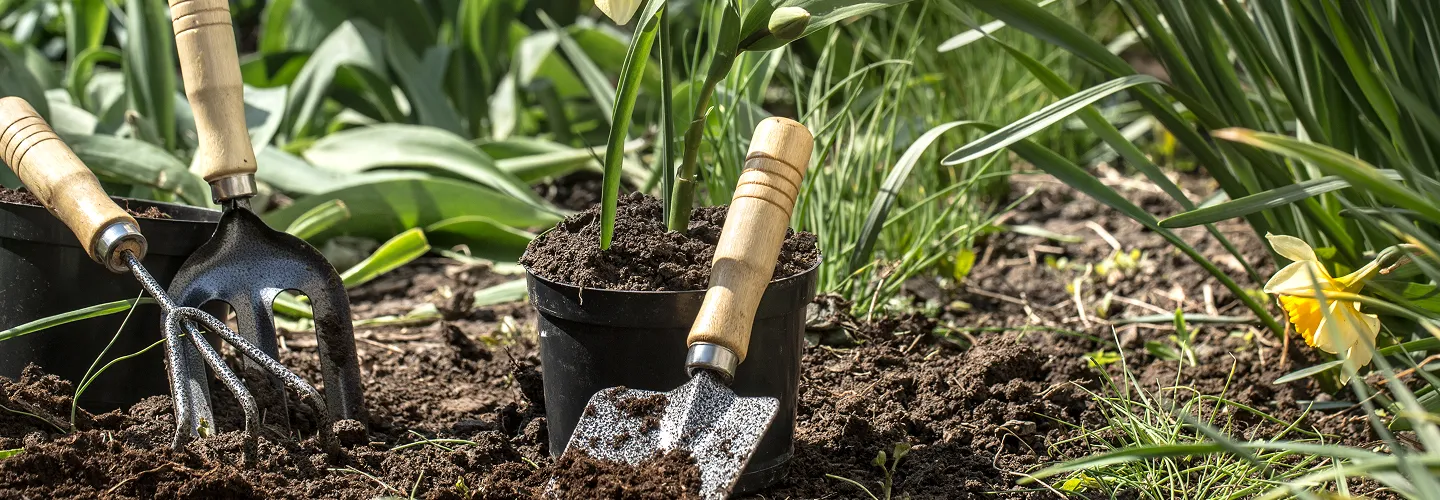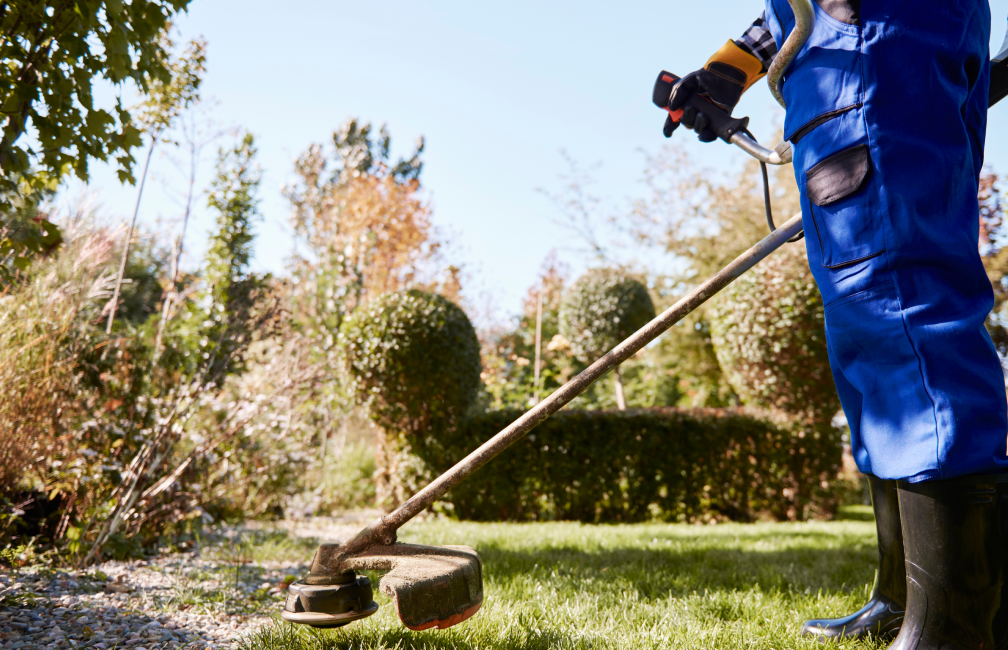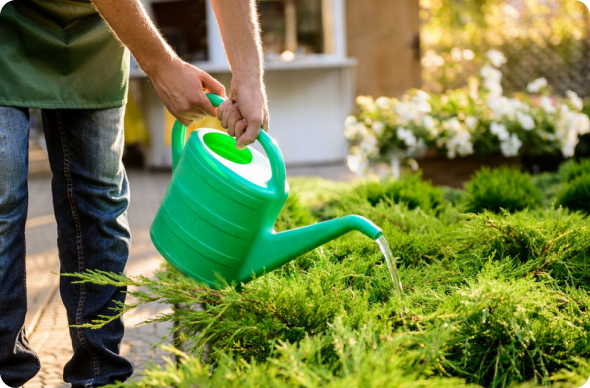
Burlington Lawn Aeration Services
Choose our expert lawn aeration services to ensure deeper root growth, improved soil health, and a greener, more resilient lawn that stands out all season long.
Get a Free QuoteWhen to Schedule Lawn Aeration in Burlington, MA – Seasonal Guide
In Burlington, MA, the best time to schedule lawn aeration is typically in early fall, from late August through September. This period aligns with the region’s cooler temperatures and increased rainfall, which help grass roots recover and thrive after aeration. Burlington’s climate, with its cold winters and humid summers, means that spring aeration can also be effective, especially for lawns that see heavy use or have compacted soil. However, fall remains the preferred window, as it allows lawns in neighborhoods like Fox Hill and Pine Glen to establish strong root systems before winter frost sets in.
Local environmental factors play a significant role in determining the optimal timing for aeration. For example, areas near the Mill Pond Reservoir may experience higher soil moisture, while properties shaded by mature trees in the Francis Wyman district might have slower soil drying times. It’s important to consider Burlington’s average frost dates and the risk of late-spring droughts, as well as the type of soil common in the area—often a mix of loam and clay, which can become compacted over time. For more information on Burlington’s climate and municipal guidelines, visit the official town website.
Local Factors to Consider for Lawn Aeration in Burlington
- Tree density and shade coverage, especially in established neighborhoods
- Soil type (loam, clay, or sandy soils) and compaction level
- Proximity to water sources like Mill Pond or Vine Brook
- Seasonal precipitation patterns and drought risk
- Terrain slope and drainage characteristics
- Municipal restrictions or recommended service windows
Benefits of Lawn Aeration in Burlington

Improved Soil Health
Enhanced Grass Growth
Better Water Absorption
Reduced Soil Compaction
Increased Lawn Resilience
Professional Local Service

Burlington Lawn Aeration Types
Core Aeration
Spike Aeration
Liquid Aeration
Slicing Aeration
Manual Aeration
Plug Aeration
Rolling Aeration
Our Lawn Aeration Process
Site Evaluation
Preparation
Core Aeration
Cleanup
Post-Aeration Review
Why Choose Burlington Landscape Services

Burlington Homeowners Trust Us
Expert Lawn Maintenance
Reliable Seasonal Cleanup
Competitive Pricing
Professional Team
Satisfaction Guarantee
Personalized Service
Contact Burlington's Department of Public Works for Soil Core Disposal & Aeration Debris Management
Prudent stewardship of extracted soil plugs following turf perforation procedures represents a cornerstone of responsible landscape management throughout Burlington, Massachusetts. The town's Department of Public Works has established comprehensive protocols for organic yard debris processing that significantly impact property owners managing post-aeration materials. Understanding these municipal standards ensures regulatory compliance while fostering environmentally sustainable soil cultivation practices across this Middlesex County community, distinguished by its extensive corporate campus developments and strategic position within the Shawsheen River valley ecosystem.
Burlington Department of Public Works
29 Center Street, Burlington, MA 01803
Phone: (781) 270-1600
Official Website: Department of Public Works
Municipal authorities advocate allowing extracted plugs to naturally decompose on turf surfaces, returning valuable organic compounds and essential mineral nutrients to the soil ecosystem. When removal becomes necessary due to excessive accumulation, residents must employ biodegradable paper receptacles exclusively, avoiding synthetic materials that violate Massachusetts General Law Chapter 111, Section 150A. Optimal stewardship strategies include allowing plugs to air-dry 48-72 hours before redistribution through mowing operations, positioning collected materials away from corporate campus drainage systems and Shawsheen River tributaries, thoroughly cleaning hard surfaces to prevent soil migration into storm infrastructure, and coordinating with municipal recycling facility schedules. This methodology proves exceptionally beneficial for Burlington's diverse soils that transition from challenging corporate development substrates to natural river valley formations throughout this dynamic business-residential landscape.
Understanding Soil Compaction in Burlington's Corporate Campus Developments and Glacial Till Formations
Burlington's distinctive geological composition encompasses extensive corporate campus developments interspersed with natural glacial till uplands and Shawsheen River valley alluvium, creating sophisticated soil cultivation challenges throughout this northwestern Massachusetts suburban-corporate community. According to USDA Web Soil Survey documentation, predominant soil classifications include Urban land-Paxton complexes and Urban land-Charlton complexes in developed corporate zones, with natural Paxton and Woodbridge fine sandy loams on glacial till uplands, Canton and Charlton complexes on elevated knolls, plus Windsor, Hinckley, and Merrimac sandy soils on outwash terraces near the Shawsheen River corridor. Poorly drained zones encompass Ridgebury fine sandy loam in inter-drumlin depressions, while organic Freetown and Scarboro series occur along Vine Brook, Mill Brook, and corporate campus pond systems.
The extensive corporate campus developments create unique complications through engineered substrates, severely compacted conditions from construction activities, parking infrastructure impacts, and intensive professional landscape maintenance operations. These commercial properties often feature sophisticated irrigation systems, specimen plantings, and complex stormwater management infrastructure requiring specialized coordination with corporate facility management programs. Natural glacial till formations contain dense clay-enriched substrates that restrict water movement and root penetration, conditions intensified by suburban development pressures and recreational activities.
University of Massachusetts Extension Center for Agriculture, Food and the Environment
161 Holdsworth Way, Amherst, MA 01003
Phone: (413) 545-2766
Official Website: University of Massachusetts Extension
These environmental stressors manifest as persistent standing water following precipitation despite sophisticated drainage systems, extreme soil resistance indicating hardened compacted layers from construction and maintenance activities, declining turf vigor despite professional management programs, and extensive moss proliferation in shaded areas where poor soil structure creates challenging growing conditions. Professional aeration becomes indispensable when conventional maintenance proves inadequate, with corporate campus areas requiring annual treatments using specialized equipment, while residential areas benefit from standard approaches paired with organic matter incorporation.
Burlington Conservation Commission Guidelines for Core Aeration Near Protected Shawsheen River Watershed Systems
Environmental protection requirements substantially influence lawn aeration operations throughout Burlington, particularly adjacent to the Shawsheen River, Vine Brook, Mill Brook, Mary Cummings Park, Burlington Landlocked Forest, and numerous corporate campus pond systems that characterize this community's commitment to balancing business development with environmental stewardship. The Burlington Conservation Commission enforces stringent buffer zone restrictions prohibiting mechanical soil disturbance within 100 feet of certified wetland boundaries and 200 feet of perennial stream channels, as mandated by the Massachusetts Wetlands Protection Act.
Burlington Conservation Commission
29 Center Street, Burlington, MA 01803
Phone: (781) 270-1600
Official Website: Conservation Commission
Property owners developing aeration strategies must secure written authorization when operating within designated buffer zones or environmentally sensitive watershed regions. The commission requires comprehensive site documentation showing wetland boundaries, corporate campus water features, proposed aeration locations, and thorough erosion prevention measures preventing soil displacement into protected aquatic systems. Timing restrictions apply during wildlife reproduction periods, typically limiting mechanical operations between March 15 and August 31 to safeguard sensitive river valley ecosystems and nesting bird populations.
Burlington's Implementation of Massachusetts Soil Health Regulations for Aeration Operations
Massachusetts soil health regulations establish comprehensive standards for mechanical soil management practices, including core aeration operations conducted throughout Burlington's corporate campus and residential environment. These regulations require adherence to best management practices designed to safeguard groundwater quality and prevent soil erosion during aeration activities.
Massachusetts Department of Environmental Protection
One Winter Street, Boston, MA 02108
Phone: (617) 292-5500
Official Website: Massachusetts Department of Environmental Protection
Massachusetts Department of Agricultural Resources
251 Causeway Street, Suite 500, Boston, MA 02114
Phone: (617) 626-1700
Official Website: Massachusetts Department of Agricultural Resources
Implementation emphasizes timing restrictions and equipment specifications, requiring hollow-tine equipment that extracts clean cores 2-3 inches deep on till soils with specialized techniques for corporate engineered substrates. Primary benefits include enhanced water infiltration through compacted surfaces, improved organic matter incorporation, reduced surface compaction from construction activities, and support for sustainable turf establishment in both corporate and residential growing environments.
Post-Aeration Stormwater Management in Compliance with Burlington's MS4 Program
Burlington's Municipal Separate Storm Sewer System (MS4) program establishes precise requirements for managing stormwater runoff following lawn aeration activities, particularly where soil disturbance could contribute to water quality degradation in the Shawsheen River watershed. The program harmonizes with federal Clean Water Act directives while addressing corporate campus stormwater management needs.
U.S. Environmental Protection Agency, Region 1
5 Post Office Square, Boston, MA 02109
Phone: (617) 918-1111
Official Website: U.S. Environmental Protection Agency, Region 1
Post-aeration stormwater management requires immediate stabilization through overseeding, mulching, or temporary erosion control measures. The EPA NPDES permit system governs municipal compliance. Weather monitoring becomes essential, with contractors postponing operations during predicted rainfall events using National Weather Service Boston forecasting data.
What Neighborhoods Do We Serve Throughout Burlington, MA?
Our specialized expertise encompasses Burlington's distinctive corporate campus and residential districts, each presenting unique soil cultivation challenges requiring expert local knowledge.
Burlington Mall & Route 128 Corporate Corridor: This major retail and business hub features extensively engineered soils with extreme compaction from commercial traffic and large-scale development. Properties require annual intensive multi-pass aeration with specialized equipment, often needing deep-tine approaches plus compost incorporation to re-establish proper soil function in these heavily modified commercial environments.
Northwest Park & Corporate Campus District: Home to Fortune 500 headquarters and technology companies, these properties feature sophisticated landscape architecture on engineered substrates. Specialized aeration approaches must address corporate aesthetic standards while establishing sustainable turf on heavily modified commercial substrates, requiring coordination with facility management schedules.
Shawsheen River Corridor & Conservation Areas: Properties along the river and Mill Brook feature fertile alluvial deposits requiring careful buffer zone compliance. Annual fall aeration with strict erosion controls protects water quality while supporting residential landscapes in these environmentally sensitive areas.
Burlington Center & Historic District: Mixed glacial till soils around the town common experience moderate compaction from civic activities. Annual core aeration emphasizing improved drainage works well while preserving mature civic landscape features and accommodating community events.
Pine Glen & Residential Heights: Established neighborhoods on glacial till with mature tree coverage require annual autumn aeration focusing on hardpan penetration and organic matter incorporation, with attention to root competition from established oak and maple canopies.
Mary Cummings Park Interface: Properties adjacent to this 200-acre conservation area need specialized timing and conservation coordination, emphasizing improved drainage while preventing impact to sensitive ecosystems supporting diverse wildlife and recreational activities.
Burlington Municipal Bylaws for Core Aeration Equipment Operation & Noise Control
Municipal noise regulations significantly impact lawn aeration service scheduling throughout Burlington, with detailed restrictions governing equipment operation hours. Town bylaws typically restrict mechanical lawn care activities to weekday hours between 7:00 AM and 6:00 PM, with weekend operations limited to 8:00 AM through 5:00 PM.
Burlington Building Department
29 Center Street, Burlington, MA 01803
Phone: (781) 270-1600
Official Website: Building Department
Burlington Board of Health
29 Center Street, Burlington, MA 01803
Phone: (781) 270-1600
Official Website: Board of Health
Equipment specifications require compliance with EPA emission standards and Massachusetts noise pollution regulations, particularly near corporate facilities and residential areas. Professional contractors must maintain current licensing while demonstrating competency in local regulatory requirements. Best practices include scheduling autumn aeration as optimal timing, marking utilities using Dig Safe protocols, coordinating with corporate schedules and community events, and providing immediate post-aeration care through appropriate seed combinations and organic amendments designed for Burlington's diverse soil conditions ranging from engineered corporate substrates to natural glacial formations.